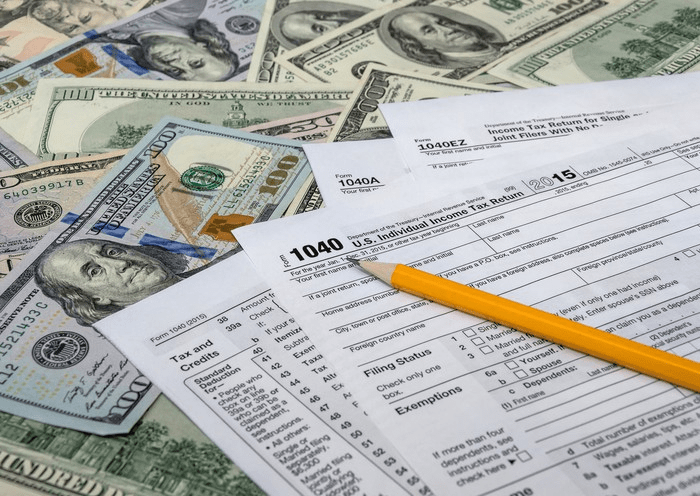The basis of the revenue part of the American budget (about 70%) is federal taxes. The most important tools for managing the level of income of the population are several types of taxes:
- income tax on the wages of individuals and self-employed entrepreneurs;
- mandatory corporate tax on excess profits of enterprises;
- wealth tax;
- sales tax and excise taxes;
- contributions to the social insurance bodies;
- unemployment tax.
Tax rates at the federal level are unchanged for all categories of payers. The object of taxation is the company’s net profit or individual’s income.

The definition of federal income tax
The federal income tax system of the United States of America has been developing and improving for more than 200 years and contributes to the development of market relations. Taxes perform not only a fiscal function but also act as a tool for regulating the development of the economy. The formation and movement of budget funds are central to the implementation of the economic policy of the American state.
Corporate federal income tax ranks third in terms of profitability. The main US corporate tax rate is 34%. This tax is paid in stages:
- 15% for the first 50 thousand dollars of taxable income;
- 25% – for the next 25 thousand dollars;
- 34% – for the remaining amount.
Moreover, an additional 5 percent tax is levied on income between $100 and $335,000. This step-by-step taxation seriously supports small businesses. In addition, accelerated depreciation rates for equipment are applied in a number of industries.
In addition to the federal income tax brackets for 2020, corporate income taxes are imposed in the states. The tax rate is generally stable, although, in some states, there is a system of progressive taxation.
Federal income tax calculator
Income tax is one of the most significant sources of fiscal revenue in the US federal budget. This tax is paid by all citizens who live and earn income in the country, including individual entrepreneurs. The tax is calculated as a percentage of the total gross income, which includes all income received by the person for a specific period. If we speak in the context of individual entrepreneurship, the tax base includes:
- income from business activities;
- income from securities;
- income received from other sources.
The federal income tax base can be reduced with the help of itemized deductions and expenses. The latter may include the cost of purchasing and maintaining capital assets, such as land, real estate, equipment, and current production costs. After deducting the permitted benefits and business expenses, there remains an amount that is referred to as the taxpayer’s net income. So, it’s easy to find out how much federal income tax to pay.
The federal income tax rate in the United States ranges from 15% to 39%, depending on the size of the profit. For example, a company whose annual income does not exceed $50,000 pays a federal income tax of 15%. Legal entities whose annual income ranges from $100,000 to $335,000 pay a tax of $22,250 + 39% of every dollar over $100,000.
At the same time, companies with an annual income of $18,333,333 pay corporate income tax of 35%. This system ensures fair taxation of small businesses and the so-called “giants” of the American economy. Thus, a federal income tax calculator can be used to make the calculations easier.